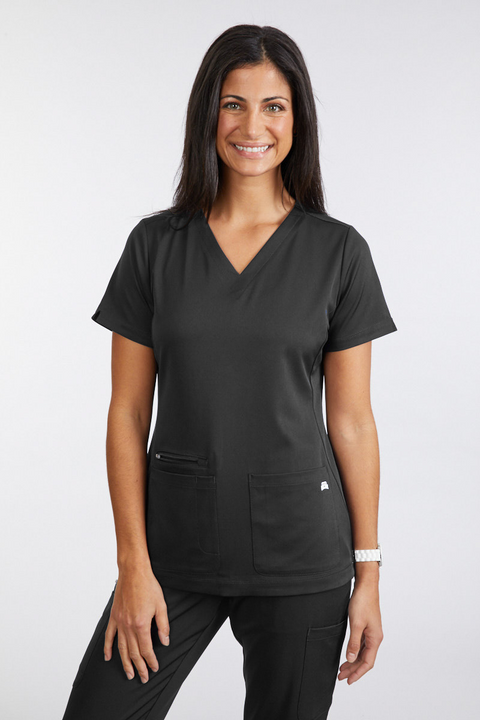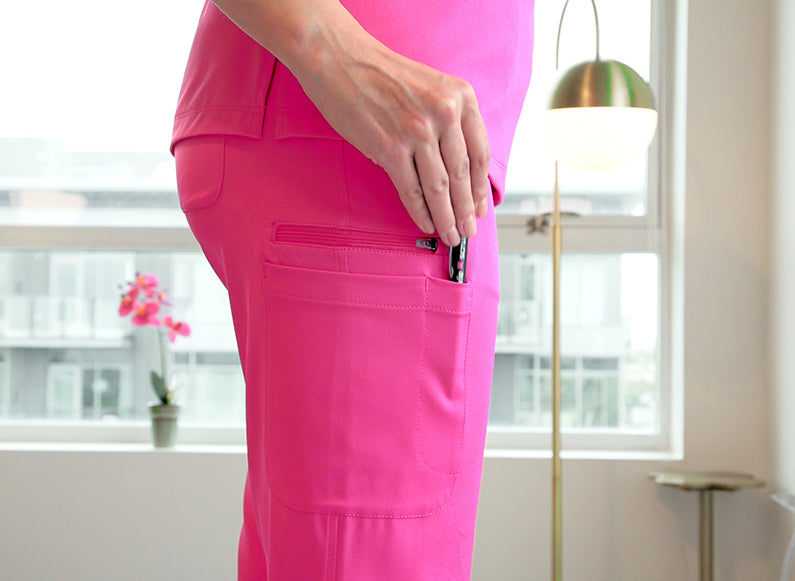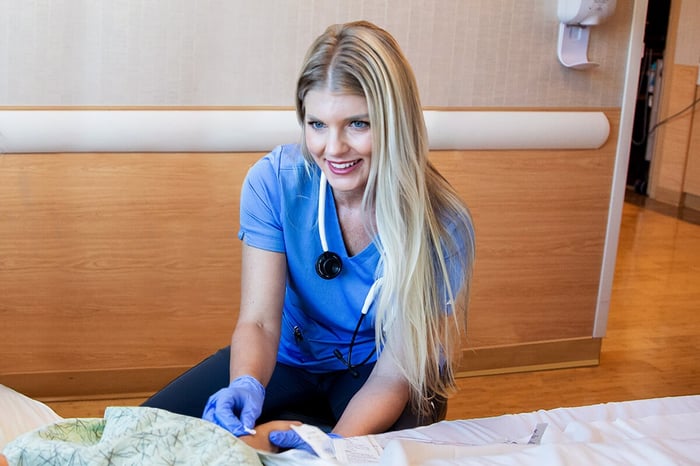It is a privilege and an honor to be a nurse. There are many of us across the United States—over 4 million as of 2020. That massive number can be viewed several different ways, but I’d like to think of it as 4 million humans who are in the workforce using their skills to make a difference in the world. Nursing is a career to be thankful for as it provides opportunities to make a difference in small ways, big ways, and sometimes unseen ways.
Small Ways—Helping Others During Every Shift
Sometimes, small tasks or seemingly insignificant acts of compassion can be brushed off by nurses as something done without thinking, but to our patients they can speak volumes. These tasks can be endless—bringing a warm cup of coffee to a patient in the morning before leaving, asking if there is anything you can do to make them more comfortable, offering to charge their phone, helping them with a video call with family, getting a warm blanket for them at bedtime, giving a cheerful smile. There are so many ways one small act of kindness can change a patient’s attitude, demeanor, and view of a hospital or a facility as a whole.
Big Ways—Ability to Save Lives
When we think of big ways of helping others as nurses, our thoughts may drift to emergency surgery, performing CPR, or assisting in life-saving medical procedures when a patient comes to the hospital. Those massive ways of helping others are incredible and save so many lives, but these aren’t the only big ways to save patients. For example, as a part of each shift, lab results are monitored by nurses across hospital and outpatient facilities. By reviewing lab results and quickly reporting the abnormal ones such as INRs, potassiums, and magnesiums, we prevent harm to the patient and are able to obtain orders to regulate the numbers.
Unseen Ways—Nursing Presence
The presence of a nurse is powerful and has the ability to create a calm environment. Even at the end of someone’s life, it can make an impact on not just the patient, but also their family. The presence of a nurse alone can speak volumes.
Often, we can lose sight of the value of our nursing presence and focus on more measurable tasks as this study discusses. Nursing presence has the ability to change the mood of a room by giving peace and comfort. Anxieties calm as the patient’s family knows they are in good hands while you’re in the room. Holding a patient’s hand or providing end-of-life education to the family can make a big difference.These activities matter, even if it doesn’t feel that way and even if you don’t get any recognition for them. Your presence is worth more than you know.
Thank you.
Why are you thankful for your nursing career? What memories have been stamped permanently in your mind that make you thankful for your nursing career? Whether from a colleague or patient, we are constantly adding to our knowledge and experience bank. Learning new things can leave us feeling empowered and ready to tackle the next task with confidence.
Also, while we’re talking about being thankful—we should discuss the ease of our uniform. Scrubs are the best for comfort and Moxie Scrubs make putting our uniform on an effortless way to enjoy what we wear every shift.
Melanie Top

$35.99
DESCRIPTION Instant comfort and professionalism are combined in this figure flattering top. As a chic and refined version of the timeless V-neck style, the Melanie top stands out with super soft, breathable, 4-way stretch fabric. Pockets you say? This top… read more
About the Author
Katherine Wylie, BSN, RN provides written health content for W Health Publications. She has worked as a RN for over 10 years in various specialties. In her free time, she enjoys spending time outside exploring with her husband and two kids in North Carolina.
References
https://www.journalofnursingregulation.com/article/S2155-8256(21)00027-2/fulltext
https://journals.sagepub.com/doi/pdf/10.1177/2158244014527990





